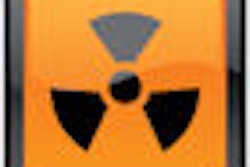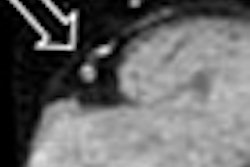Canadian researchers have issued a new set of clinical rules for determining which injured children need head CT. They hope the new guidelines could help prevent unnecessary radiation exposure and costs associated with CT overuse, researchers said.
The so-called CATCH (Canadian Assessment of Tomography for Childhood Head Injury) guidelines are designed to be an accurate and reliable clinical decision rule for the use of CT in injured children. They were published in the February 8 online edition of the Canadian Medical Association Journal.
A research team led by Dr. Martin Osmond from the University of Ottawa enrolled a total of 3,866 children (ages 0-16 years; median age, 10) with blunt head trauma who presented with a score of 13 to 15 on the Glasgow coma scale, in addition to loss of consciousness, amnesia, disorientation, persistent vomiting, or irritability.
For each young patient, emergency physicians trained in head trauma assessment completed a standardized assessment form before any imaging was ordered. When feasible, a second emergency physician independently assessed each patient.
The decision rule for head CT consisted of four high-risk factors, including failure to reach a score of 15 on the Glasgow coma scale within two hours, suspicion of open skull fracture, worsening headache, and irritability. Three additional medium-risk factors (large, boggy hematoma of the scalp; signs of basal skull fracture; and dangerous mechanism of injury) were also included in the decision rule.
The CATCH rule postulates that CT of the head is required only for children with minor head injury and any one of the following findings:
High risk (need for neurologic intervention)
- Glasgow coma scale score < 15 at two hours after injury
- Suspected open or depressed skull fracture
- History of worsening headache
- Irritability on examination
Medium risk (brain injury on CT scan)
- Any sign of basal skull fracture (e.g., hemotympanum, "raccoon" eyes, otorrhea or rhinorrhea of the cerebrospinal fluid, Battle's sign)
- Large, boggy hematoma of the scalp
- Dangerous mechanism of injury (e.g., motor vehicle crash, fall from elevation ≥ 3 ft [≥ 91 cm] or five stairs, fall from bicycle with no helmet)
The results showed that scanning patients who had any one of the CATCH rule's high-risk factors produced a sensitivity of 100.0% (95% confidence interval [CI]: 86.2%-100.0%) and a specificity of 70.2% (95% CI: 68.8%-71.6%) in predicting the need for neurologic intervention. High-risk factors would require that 30.2% of patients with minor head injury undergo CT.
The medium-risk factors were nearly as sensitive, at 98.1% (95% CI: 94.6%-99.4%), with specificity of 50.1% (95% CI: 48.5%-51.7%) for the prediction of brain injury by CT, and would require that 51.9% of patients with minor head injury undergo head CT.
By Eric Barnes
AuntMinnie.com staff writer
February 9, 2010
Related Reading
Prediction rules clarify need for CT in many children with head trauma, September 15, 2009
Studies address need to reduce CT dose in emergency settings, October 17, 2008
Low tube current, modulation reduce pediatric CTA dose, May 21, 2008
Copyright © 2010 AuntMinnie.com



















